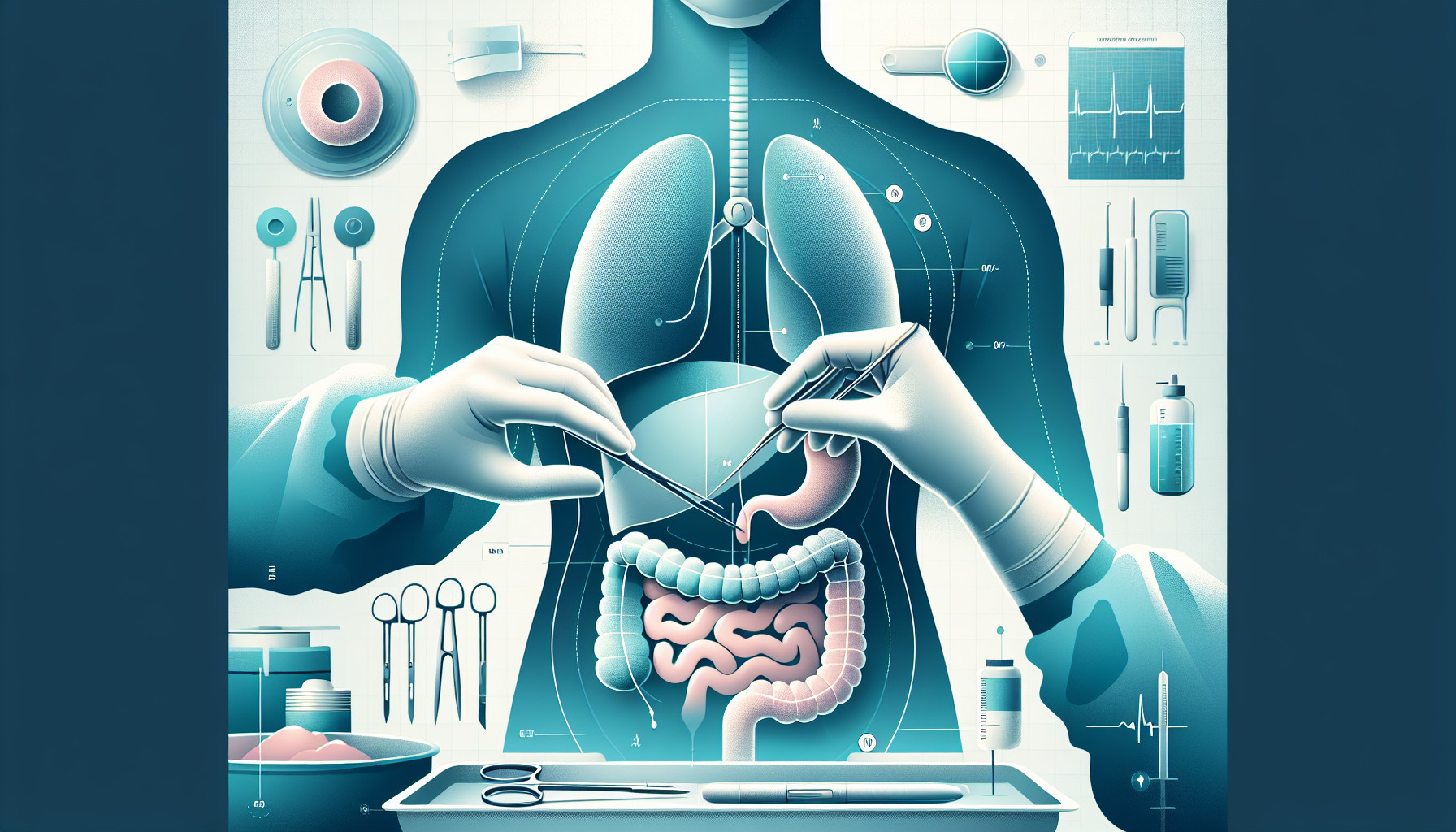Our Summary
This research paper discusses a complication that can occur after having surgery to remove part of the esophagus (oesophagectomy), often performed on cancer patients - a diaphragmatic hiatal hernia. Over the years, laparoscopy (a less invasive surgical procedure) has been favored for fixing this issue because it has fewer complications, allows patients to recover faster and requires a shorter hospital stay than traditional surgery. The advent of robotic technology has further enhanced these less invasive methods by offering potential technical benefits and overcoming some of the challenges of traditional laparoscopic techniques when performing complex procedures. This paper presents the first instance of using a robot to repair a hiatal hernia after an oesophagectomy.
FAQs
- What is a diaphragmatic hiatal hernia and how is it related to oesophagectomy?
- What are the benefits of using laparoscopy and robotic technology in repairing hiatal hernia?
- What are the potential advantages of robotic post-oesophagectomy hiatal hernia repair over traditional laparoscopic techniques?
Doctor’s Tip
One helpful tip a doctor might tell a patient about hiatal hernia repair is to follow post-operative care instructions carefully, including avoiding heavy lifting or strenuous activities for a certain period of time to allow for proper healing. It is also important to maintain a healthy diet and lifestyle to prevent the recurrence of the hernia. Regular follow-up appointments with your doctor are also recommended to monitor your recovery progress.
Suitable For
Patients who are typically recommended for hiatal hernia repair include those experiencing symptoms such as heartburn, regurgitation, chest pain, difficulty swallowing, and nausea. These symptoms may indicate gastroesophageal reflux disease (GERD) or complications related to a hiatal hernia. Additionally, patients with a large hiatal hernia, recurrent symptoms despite medication, or complications such as Barrett’s esophagus or esophagitis may also be candidates for surgical repair. In some cases, patients who have undergone oesophagectomy for cancer may develop a diaphragmatic hiatal hernia as a complication, requiring surgical intervention to repair. Minimally invasive approaches, such as laparoscopic or robotic surgery, are often preferred for hiatal hernia repair due to their reduced morbidity and faster recovery times compared to open surgery.
Timeline
Before hiatal hernia repair:
- Patient may experience symptoms such as heartburn, chest pain, difficulty swallowing, regurgitation, and belching.
- Patient undergoes diagnostic tests such as endoscopy, barium swallow, and pH monitoring to confirm the presence of a hiatal hernia.
- Treatment may include lifestyle changes, medications, and possibly a Nissen fundoplication procedure to reduce symptoms.
After hiatal hernia repair:
- Patient undergoes a robotic-assisted laparoscopic hiatal hernia repair.
- Surgery is performed with the use of robotic technology, allowing for precise movements and improved visualization of the surgical site.
- Patient experiences less postoperative pain, faster recovery, and shorter hospital stay compared to traditional open surgery.
- Patient may need to follow a special diet and avoid certain activities during the recovery period.
- Patient’s symptoms improve or resolve after the hiatal hernia repair, leading to better quality of life.
What to Ask Your Doctor
- What are the risks and benefits of undergoing a robotic hiatal hernia repair compared to traditional open surgery or laparoscopic surgery?
- How long is the recovery time expected to be after a robotic hiatal hernia repair?
- What are the potential complications of a robotic hiatal hernia repair and how are they typically managed?
- How experienced is the surgical team in performing robotic hiatal hernia repairs?
- Will I need to make any lifestyle changes or follow a special diet after the surgery?
- What type of follow-up care will be needed after the robotic hiatal hernia repair?
- How successful is robotic hiatal hernia repair in treating symptoms such as acid reflux or difficulty swallowing?
- Are there any alternative treatment options for hiatal hernia repair that I should consider?
- What type of anesthesia will be used during the robotic hiatal hernia repair surgery?
- How long can I expect the results of the robotic hiatal hernia repair to last?
Reference
Authors: Bigolin AV, Fonseca MK, Grossi J, Iaroseski J, Cavazzola LT. Journal: Ann R Coll Surg Engl. 2022 Jun;104(6):e171-e173. doi: 10.1308/rcsann.2021.0244. Epub 2021 Nov 3. PMID: 34730425
